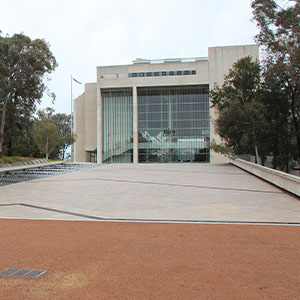These judgments (published in relevantly identical terms in both proceedings) concerned an application to consolidate two related class actions against Insurance Australia Ltd (IAL) and Insurance Manufacturers Australia Pty Ltd (IMA). IAL and IMA provide home and contents insurance products under various brands, including SGIO, SGIC, RACV and NRMA. The Inglis proceeding (which was brought only against IAL) concerns products issued under the NRMA brand; the Dawson proceeding (which was brought against IAL and IMA) concerns products issued under the SGIO, SGIC and RACV brands. Both proceedings were commenced by Slater & Gordon.
In the proceedings the plaintiffs allege that:
- in the course of offering insurance policies to existing policy holders, IAL and IMA offered ‘loyalty discounts’, representing that the premium payable on renewed policies would be discounted based upon the number of polices held or the length of time the customer had insured with the defendants;
- in fact, the purportedly discounted premiums were calculated by algorithmic modelling that caused them to be higher (or at least no less expensive) than they would otherwise have been; and
- in the circumstances, each defendant engaged in misleading or deceptive conduct and unconscionable conduct.
The parties jointly sought consolidation of the two proceedings. Justice Nichols held that consolidation was appropriate because:
- The legal and factual allegations made in each proceeding were substantively the same; the causes of action relied upon and the relief claimed is the same; the proceedings involve a common defendant (IAL), albeit the Dawson proceeding is also brought against IMA; the allegations against IMA and IAL are substantially the same; and although the allegations in the proceedings concern policies issued under different brands, the allegations made in respect of those policies (the defendants’ conduct in relation to the offer of purported discounts, the manner of calculation of the premiums and the circumstances of the conduct) are substantially the same.
- In those circumstances there will undoubtedly be common questions of law and fact arising in each proceeding and significant efficiencies which will be gained from consolidating the proceedings; further, there would be a risk of inconsistent findings from separate trials if the two proceedings were not consolidated.
- The plaintiffs in each proceeding are represented by the same firm of solicitors, and therefore no inefficiencies would flow from joint representation (and no apparent unfairness to the defendants).
The only issue in dispute concerned the plaintiffs’ application for an order that all documents produced and discovered to date in the Dawson proceeding (being the proceeding that had been on foot the longest) including by way of discovery, pursuant to s 26 of the Civil Procedure Act 2010 (Vic) or pursuant to subpoena be treated as documents produced or discovered (as applicable) in the consolidated proceeding.
The defendants opposed that order, on the basis of questions having previously been raised by them as to whether documents produced in the Dawson proceeding had already been (improperly) used to prepare the statement of claim in the Inglis proceeding. However, Slater & Gordon had repeatedly denied that accusation, and her Honour considered it appropriate to make the order sought by the plaintiff, concluding that “IAL has not identified any real reason why the documents produced in the Dawson proceeding should not be treated as though they had been discovered in the consolidated proceeding” (at [7]). Her Honour continued (at [11]):
It is conceivable in theory that two proceedings might be consolidated in circumstances where one or both raise discrete issues in respect of which discovery was given before consolidation that give rise to particular concerns about disclosure to a party not involved in both proceedings. That kind of case might in fact raise difficulties for consolidation. But that is not this case. In this case and in the ordinary course where proceedings are consolidated, documents produced in the legacy proceedings should as a matter of procedural efficiency, become documents in the consolidated proceeding. In this case, the reasons that support consolidation also support the [plaintiffs’ proposed order]. That order will not impose any additional burden on the defendants (none has been identified). Permitting the use of the documents in the consolidated proceeding going forward will not sanction collateral use of the documents. It is an order suited to the attainment of justice because it facilitates the orderly and efficient conduct of the proceeding and does not involve the consequences that the rule protecting against collateral use is intended to prevent.
Inglis v Insurance Australia Ltd [2025] VSC 91; Dawson v Insurance Australia Ltd [2025] VSC 92
Supreme Court of Victoria | Nichols J | 11 March 2025
Plaintiff’s Solicitors: Slater & Gordon
Defendant’s Solicitors: Herbert Smith Freehills
We're here to help
Contact us today
Learn more about our class actions work
We're Australia's leading class action practice, and we've obtained more than $5 billion in settlements for our clients.
Easy ways to get in touch
We are here to help. Give us a call, request a call back or use our free claim check tool to get in touch with our friendly legal team. With local knowledge and a national network of experts, we have the experience you can count on.
Office locations
We’re here to help. Get in touch with your local office.
Select your state below
- VIC
- QLD
- NSW
- WA
- ACT
- SA
- TAS
- NT
We have lawyers who specialise in a range of legal claims who travel to Australian Capital Territory. If you need a lawyer in Canberra or elsewhere in Australian Capital Territory, please call us on 1800 675 346.
We have lawyers who specialise in a range of legal claims who travel to Tasmania. If you need a lawyer in Hobart, Launceston or elsewhere in Tasmania, please call us on 1800 675 346.


